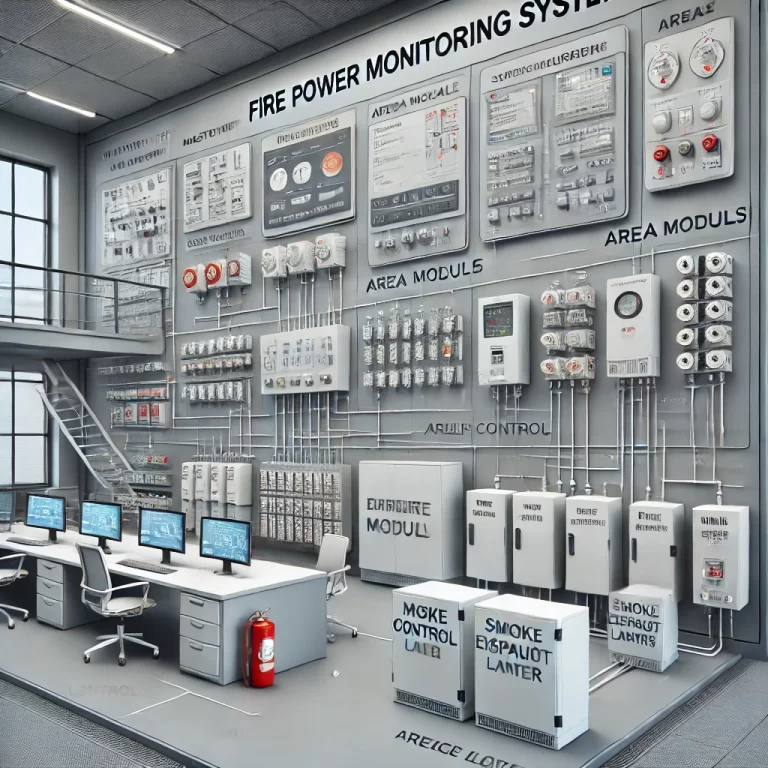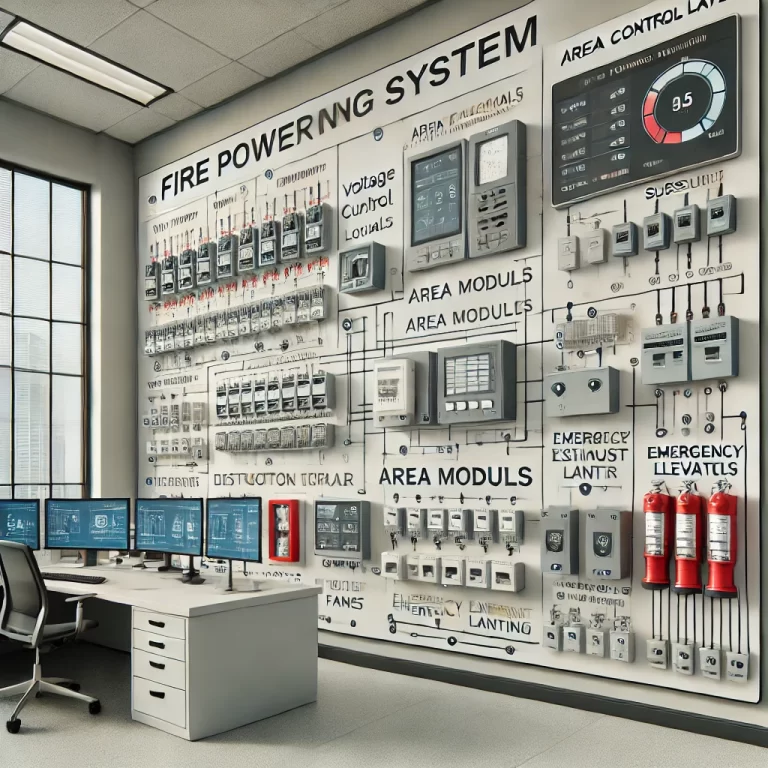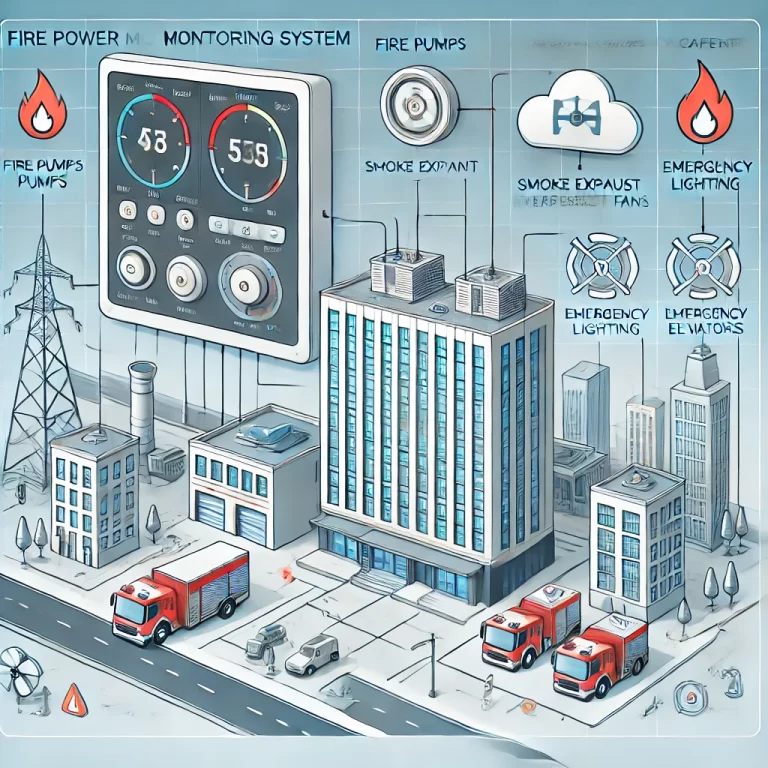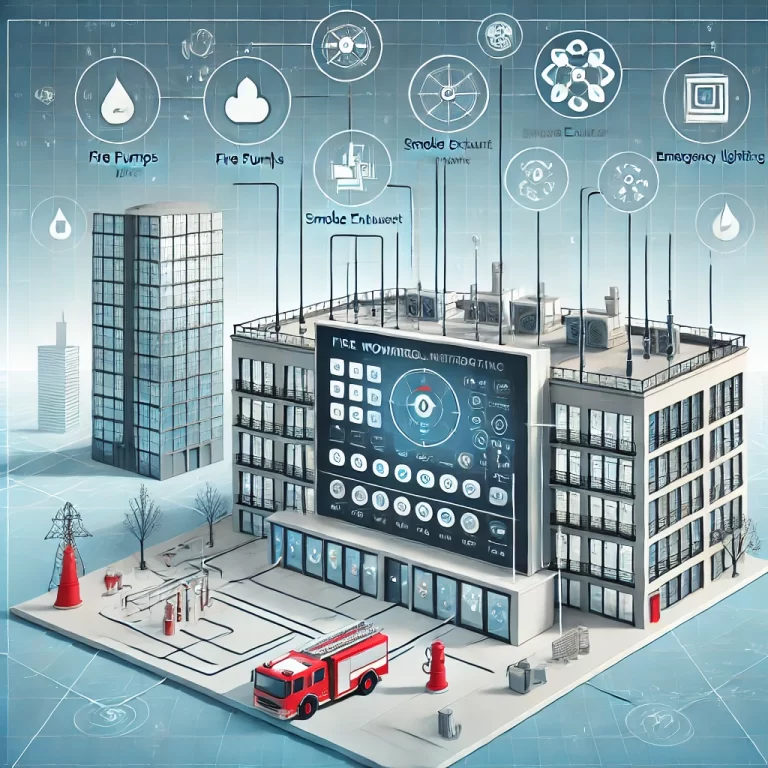1. What is a Fire Power Monitoring System?
A fire power monitoring system is designed to perform real-time monitoring of the power supply status for firefighting equipment. By continuously tracking critical parameters such as voltage, current, and switch status, the system ensures that all fire protection devices are operating under normal conditions. Modern fire power monitoring systems are characterized by high reliability, real-time performance, digitalization, intelligent automation, network integration, and continuous monitoring capabilities.
2. Why is it Necessary to Install a Fire Power Monitoring System?
In recent years, the number of large-scale modern buildings, public gathering venues, and high-rise structures has been steadily increasing. Within these structures, the fire control center is responsible for operating numerous critical systems, including the automatic fire alarm system, indoor hydrant system, automatic sprinkler system, smoke control and exhaust system, emergency lighting system, and emergency broadcast system. The operational reliability of the fire protection systems largely depends on the continuous, stable operation of their power supplies.
Failures in the power supply to fire protection equipment have been a major contributing factor in the uncontrolled spread of fires, leading to severe accidents. A dedicated fire power monitoring system plays a vital role in promptly detecting faults or abnormalities in the power supply and ensuring the proper functioning of all firefighting systems when emergencies arise.

3. Firefighting Equipment Requiring Power Monitoring
The following types of fire protection equipment typically require power monitoring:
Fire pumps for hydrant systems, automatic sprinklers, water spray systems, and fire water cannons.
Fire pumps and foam concentrate pumps for foam extinguishing systems.
Field controllers (or main control units) for gas and dry powder extinguishing systems.
Fans for smoke prevention and smoke exhaust systems.
Fire shutter controllers.
Control boxes (or field control units, power supply boxes) for emergency lighting and evacuation indication systems.
Firefighting elevators.
Various peripheral fire protection power supplies and site-specific firefighting equipment requiring independent power supply.

4. Typical Installation Locations for Power Monitoring Sensors
Power monitoring sensors are usually installed at the following critical points:
The output terminals of the main and emergency power distribution cabinets supplying electricity to firefighting equipment.
The dual power inputs of firefighting electrical control devices (such as pump controllers and fan controllers).
The output terminals of direct current (DC) power supplies serving fire protection equipment in each fire compartment.
The output terminals of distribution boxes supplying power to firefighting equipment.
The input terminals of emergency power supplies for firefighting equipment.
The input terminals of emergency lighting distribution boxes.
The input terminals of each main supply loop for equipment with multiple primary power sources.
Proper sensor placement ensures complete coverage and timely detection of power abnormalities across all essential firefighting systems.

5. System Structure of a Fire Power Monitoring System
A complete fire power monitoring system is typically composed of three main components:
Monitoring Host (Main Control Unit): Responsible for centralized monitoring, fault detection, data collection, storage, analysis, and display for all connected firefighting equipment power sources. Usually installed in the fire control room or any continuously manned area.
Regional Substations (Area Modules): Intermediate units that manage local data collection and ensure reliable communication between field devices and the monitoring host.
Voltage and Current Sensors: Installed on-site to collect real-time electrical parameters and transmit them to the monitoring host.
The system architecture is generally a three-layer design:
Master Control Layer: Wall-mounted monitoring host placed in the fire control center.
Communication Layer: Connecting the device layer and master control layer via a two-wire communication protocol (often RS485/Modbus), and providing fire linkage output interfaces.
Device Layer: Distributed voltage and current sensors installed within the power distribution boxes for firefighting equipment.

6. Conclusion
The deployment of a fire power monitoring system significantly enhances the reliability and safety of firefighting equipment in modern buildings. By enabling real-time, automated supervision of power supply status, these systems help prevent critical failures, reduce fire risks, and ensure compliance with national fire safety standards. As urban construction continues to expand in scale and complexity, implementing robust fire power monitoring solutions becomes not only necessary but essential for safeguarding lives and property.
